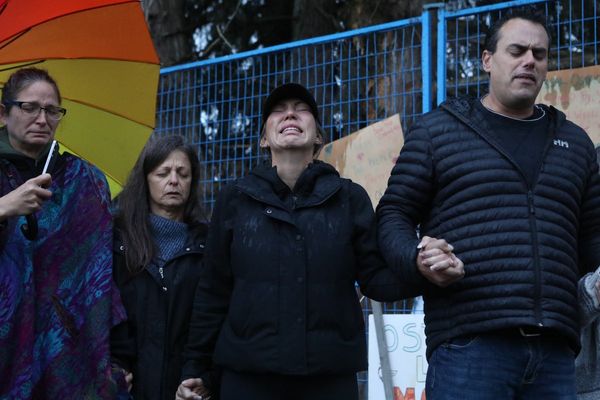
As the federal government warns the climate crisis will increase heat-related deaths, with the impact disproportionately borne by the already vulnerable, data obtained exclusively by Guardian Australia shows the parts of Australia’s major cities that are most vulnerable to heat.
The new measure, called the Heat Vulnerability Index and compiled by researchers at RMIT, combines temperature readings from satellites, with data on populations particularly susceptible to heat (such as older Australians and those with disabilities), the built environment and green space, and socioeconomic factors like income and education.
The data shows particularly high vulnerability in western Sydney and the outer suburbs of Melbourne, Adelaide and most other major Australian cities. But it also shows high vulnerability in colder climates like Hobart, Launceston and Albury.
You can explore heat vulnerability across Australia in the map below:
“When we generally think about climate change, and we think about heat, we think about land surface temperature. But [there are] other factors that mean you may be more or less sensitive to heat,” Dr Melanie Davern, the director of the Australian Urban Observatory, said.
Davern noted factors such as the actual built environment and access to services, but also things like age, pre-existing conditions and income. Some of these may also be correlated and compound one another – many older Australians also have other pre-existing conditions, for instance.
• Sign up to get climate and environment editor Adam Morton’s Clear Air column as a free newsletter
“We know that you sweat less as you get older, so it’s harder to cool. We know up to the ages of 4, you also find it harder to thermoregulate,” Davern said.
“One in 6 Australians has cardiovascular disease. We know that with cardiovascular disease, respiratory disease, diabetes, mental illness, neurological conditions, those people are also going to be more susceptible to heat. So you’ve got multiple layers of complexity that contribute to heat vulnerability.”
A separate study recently published by researchers at Monash University found heatwaves caused 1,009 deaths in Australia between 2016 and 2019. The study found that communities with greater shares of elderly residents, those needing assistance and lower income or education experienced higher mortality.
Unpacking the heat index we can see how widespread these vulnerabilities are, and that they cut across our cities. The next map shows “heat sensitivity”, which includes data on the built environment, vegetation, vulnerable groups (the very young, elderly and those who need care) and population density.
It also shows “adaptive capability”, which are socioeconomic factors like income and education. The RMIT Associate Prof Qian (Chayn) Sun developed the indexes and said heat sensitivity was more of a measure of the community’s susceptibility to heat, while adaptive capability showed the individual’s and group’s ability to mitigate heat, such as being able to afford to run an air conditioner.
While vulnerability is correlated with socioeconomic factors, the maps show clear exceptions – Carlton and Fitzroy in Melbourne and Woolloomooloo and Rushcutters Bay in Sydney are all 5/5 on the Heat Vulnerability Index. All do poorly on heat sensitivity.
“It’s not just people living in disadvantaged areas that are going to be heat vulnerable, but it’s the combination of factors – the environment, age, possibly pre-existing conditions. This is not a simple story that only applies to one group. It actually applies across the country,” Davern said.
“When you look at the maps, you do see less heat vulnerability in particular areas of greater socioeconomic advantage. But it doesn’t exclude them because there are areas where you might have a very high proportion of older people, and they may be wealthy, but they’re still going to be vulnerable because of the environment and pre-existing conditions.”
The final map shows the heat data captured by satellites across the same suburbs as the maps above. Many of the places that are particularly vulnerable to heat stand out here – Sun said that Brimbank in Melbourne’s west was the most vulnerable area in the index and had a “very clear urban heat island [effect]”. But you can see similar patterns across most cities in the data.
Both Davern and Sun said the data showed the need to improve planning processes to take into account the interplay of all these factors.
“Planning is the major challenge. We don’t think about the connectivity across different aspects. Governments are divided into portfolios, but we [need] an integrated approach to thinking about planning a livable place.”







